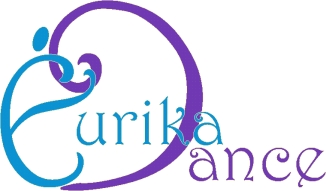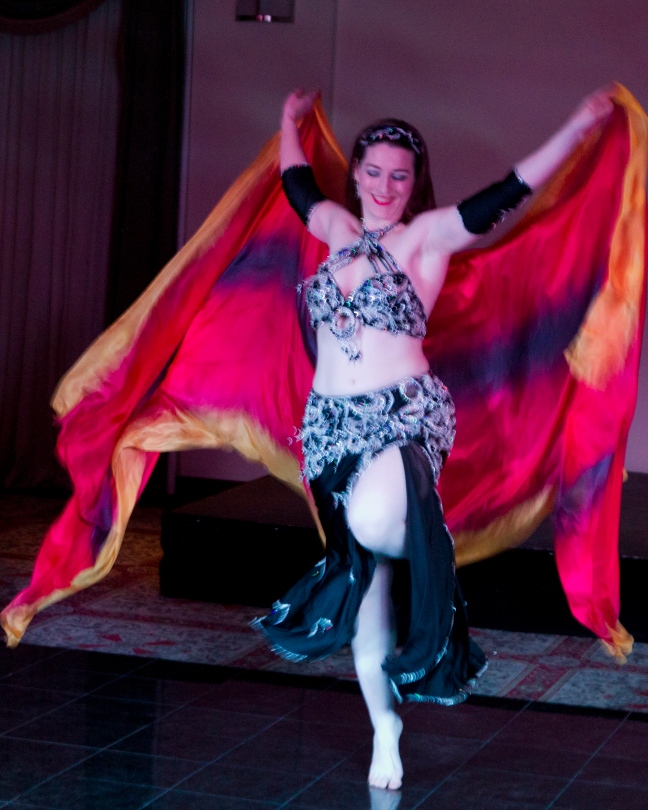A Dancers’ Guide to getting the most of the Ottawa Souk Part 5 – Veil!
As promised in the last blogletter, this blog will focus solely on the belly dance prop of veil. Why designate a blog just on veil? Well, if you know me, I’m a happy veil-aholic and I love helping people either learn how to use the veil, to dance with, or help them to find a veil that they want to buy.
Are there Local Stores in Ottawa to Shop for a Veil?
Let’s start here. There are no stores that sell just veils, that you can walk into and browse. Really the best place to actually start looking for veils, that you can see and try in person, are either at the Souk, sporadic community events that may have veils for sell and, belly dance workshops (local or out of town). If you don’t want to wait for an event to occur, here is the easiest solution for getting your hands on a veil…Fabricland or any fabric store that has some nice quality silk chiffon at a length of about 3 yards and finish the raw edges.
What kind of Fabric is a Veil made of?
My philosophy, regarding what kind of fabric a veil is made of is skewed; because I will dance with any piece of fabric you give me with the moves I know for the standard veil fabrics. That being said, the better question is what is the standard veil fabrics? The two types of fabric, I personally like are either Silk Chiffon (which you can get at most fabric stores) and Silk (which I discuss more in-depth below). You can use regular chiffon, lamme, organza or any fabric that has good movement and isn’t too heavy, unless you’re looking for a weighted fabric for an arm workout. I’m not a big fan of the lamme as it will tend to fade over time and the fabric sticks together when stored. Organza is very light and can be fickle, especially when hemming, however, I like organza for weight veils.
Veils with Trim!
Veils with fancy trimming are pretty but they can be problematic. If the trim is too stiff then this will affect the movement of the veil. Trim can add weight, and can potentially get caught on costumes, earring and/or accessories you may be wearing. Also, upkeep on a veil with trim is more than just a plain edge veil.
Half-circle or Rectangle Veil?
Typically, veils can either be rectangular or semi-circular in shape. Half-circle (semi-circle) veils are not as common as the rectangle veils, however, they do provide some nice visual patterns that are different than with the rectangle veils. They are also easier to use for double veil moves. Rectangle veils are great for using for draping on or wrapping around your body.
Length of the Veil?
Most standard veils are around 3 yards in length and about 45 inches wide. 2.5 yards works for short arms or children. If the width is too long, you can either ask for it to be shortened or do it yourself, if you’re good with hemming edges. If you love veil and/or have long arms you may have fun with a 3.5 to 4 yard veil.
What Veils are good for Outdoors and Indoors?
Knowing what venue you will be dancing in can influence what type of veil you might use. For instance, any type of veil can be used indoors, as typically there is not much interference with wind or rain. However, if you’re performing in a restaurant, you may not want to use a silk veil that may get dropped on a dirty, sticky floor. Unless you have a inexpensive silk veil or a good place to drop your veil at your venue, a silk chiffon veil is good for “high chance of getting dirty” venue. For outdoor venues, you need to consider the weather as well as where you will drop your veil. If it’s a particularly windy day, a heavier veil will be a little easier to control than a really light veil, however, either way, windy days will always be a challenge to use a veil outdoors.
Veil colour (plain, or patterned)?
This is your choice! If you have a costume you want to match to, then I recommend either bringing a photo of the costume with you or a piece of your costume so you can place it against veils to see if you like the colour combination. Pattern is also a preference. You often have the choice of solid colour veils, colours that gradual or dramatically change across the veil or veils that have some form of pattern of design. If you are looking for matching veils, solids are usually the easiest to match, while pattern veils will more likely be a special order.
Choosing a Silk Veil!
How can I choose just one? I say, why does it have to be just one? Realistically, though, even if you have a growing collection at home, you’re not often going to buy a lot of veils at one time. Silk veils come in different weights, quality and styles that if can be daunting at first. You will hear words like momme thrown around, which is simply a unit of measurement for the weight of the silk. 4 to 6 momme are common while 8 momme is not as common to find. The lower the number the lighter the veil will be. Although, this is in constant debate and not validated, darker colours tend to have a bit more of weight to the fabric than light colours. Things to check for while looking at the veil, other than just the colour and pattern, is how the raw edges were finished. Some veils are not well and the hem can be uneven or perhaps not even finished. Unfinished edges will diminish the life of the veil as the threads will fray and separate. Silk can have imperfections; often called bruising it will look like a spot of uneven weave in the silk. This will help naturally, on the edges where you hold the veil, which is normal wear and tear. Quality, unused (not danced with yet) silk will have little to no bruising. Some colours, usually in the dark palettes and patterns will hide bruising as the veil gets used. Two of my favourite quality silk veil designers/makers are Shibori Borealis (based in Ottawa) and Soi mini fee (base in Mont Tremblant). Both usually have a great variety of veils available, especially at the Souk, but do offer custom veil creation.
Storage of Veils
Veil should not be left in plastic bags and/or any bags that have a naturally tendency to cause static to occur. A nice cotton bag, or something like the fabric grocery bag of Loblaws works fine when you’re travelling with your veils and space is limited. If possible, try to keep your veils on hangers to minimize the amount of creasing that occurs with the folding of the veils. Use hangers that do not have any rough edges; coated metal hangers are good and will minimize static transfer that plastic hangers can have; a spritz of water can help minimize static.
How many veils should a person have?
In closing, I have often been asked how many veils I have or how many veils should a person have in their closet or dance bag? I have many and it’s in part because I love veils and I bring them to my class to share with my students during class time. However, I think, for those interested in dancing a lot with veil should at least have a minimum of two veils. It’s always good to have a back up with you, as sometimes the humidity will affect veils differently; one veil may not have as much static as the other. Also, having two veils allows you to have a bit of variety with your costumes. I hope you enjoy your new veil!


